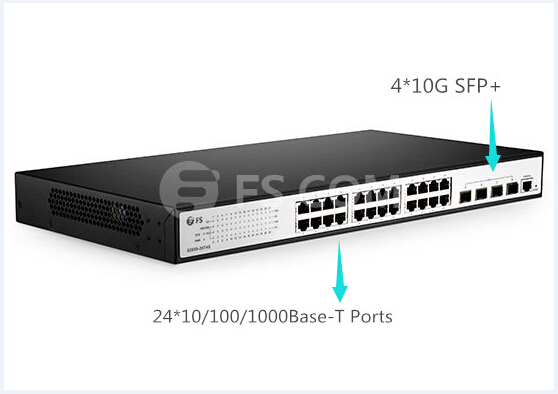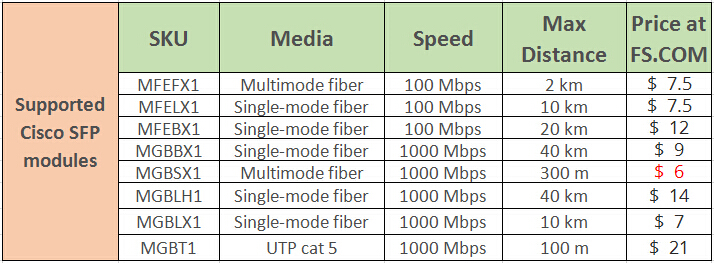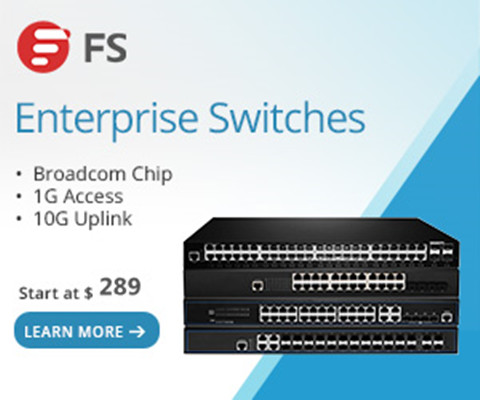Cloud is the hot issue, and its fast adoption rate is mostly happening in larger organization. To make every money count in small business network, Cisco and other telecommunication vendors release small and medium-sized business (SMB) switches to stay ahead in a competitive marketplace. Cisco 300 series SMB switch is the fixed-configuration Ethernet switch, which features high-performance, easy-to-setup and energy efficiency. Are you ready to learn more about it? Do you know how to choose fiber optics for Cisco SMB switches?
Networking News for SMB Switch
According to analysis, in the last five years, SMB cloud adoption nationwide has gone through the roof due to the need for scalability and deployment. However, 60% of hacked SMBs go out of business after six months due to the security issue. Furthermore, 70% of the SMB haven’t deployed mobile management solutions for phones and other devices, which makes it even better if you can get ahead of the game. Cisco small business switches, featured with increased revenue, excellent efficiency and strengthened security, provide a better way to do IT. Figure 1 shows 28 Ports 10G SMB Switch.

Cisco 300 SMB Ethernet Switch—Powerful and Affordable
The Cisco 300 Series switches is part of Cisco Small and Medium-sized Business line of network solutions. These switches offer the perfect combination of affordable and advanced networking for small businesses, and help you create a more efficient, better connected workforce. Cisco 300 series are available with 8 to 48 ports of Fast Ethernet and 10 to 52 ports of Gigabit Ethernet connectivity, providing optimal flexibility to create exactly the right network foundation for your business.
Choose the Cisco Small Business Switches for:
- Strong security: a high level of security and give you finegrained control to safeguard your network from unauthorized users.
- Power over Ethernet: with up to 48 PoE ports of Fast Ethernet or Gigabit Ethernet connectivity.
- Support: with Cisco Small Business Support Service.
- Advanced management options: with Web-based and command-line interfaces.
- Performance: through VLAN scalability and a non-blocking switch fabric.
- Intelligence: with security and quality of service.
- Fan-less for quiet operation.
Models in Cisco 300 Small Business Switch:
Cisco SF 300-08, SF 302-08, SF 302-08MP, SF 302-08P, SG 300-10, SG 300-10MP, SG 300-10P, SG 300-20, SF 300-24, SF 300-24P, SG 300-28, SG 300-28P, SF 300-48, SF 300-48P, or SG 300-52 Managed Switch. Take Cisco SG 300-10 gigabit switch as an example, it is the fixed configuration managed switch with 2 Gigabit Combo Ports (RJ45+SFP).
You can buy Cisco SG 300-10SFP 8-Port Gigabit SFP Switch with $457.67 in cozlink, or FS S3700-24T4S (24*10/100/1000Base-T Ports+4*10G SFP+) SMB Ethernet Switch at $289.
Unmanaged SMB Switch—Is It the Choice for Small Business Network?
Cisco Small Business Unmanaged Switch is the most cost effective scenarios that require only basic layer 2 switching and connectivity. As such, they fit best when you need a few extra ports on your desk, in a lab, in a conference room, or even at home. With unmanaged switches installed in your network, you can even get capabilities such as cable diagnostics, prioritization of traffic using default QoS settings, Energy savings capabilities using EEE (Energy Efficient Ethernet) and even PoE (Power Over Ethernet).
However, as the name implies, these switches generally cannot be modified/managed. You simply plug them in and they require no configuration at all. Therefore, Many customers prefer to use managed switches.
Cisco Transceiver Module for Compatibility Information
Supported SFP modules are listed below:

Based on the SFP (optical module form factor) Gigabit Ethernet standards, Besides the above Cisco SFP optics, 1000BASE-T, 1000BASE-SX, 1000Base-LX/LH, 1000BASE-ZX, 1000BASE-BX-D, 1000BASE-BX-U, 1000BASE-EX can be also used with Cisco small business 300 Series SMB switch.
Summary
The Cisco 300 series SMB Switches have been tested to deliver high availability and performance. This solution provides powerful and affordable services, e.g. speed up file transfer times, improve slow, sluggish network, keep business applications available and prevent costly downtime. These Ethernet switches support a huge number of Gigabit Ethernet SFP optical transceivers. You can find all the compatible ones at FS.COM. Besides SMB switches, we also offer 40G/100G data center switches with professional tech support.
Original Source: Cisco 300 SMB Ethernet Switches





